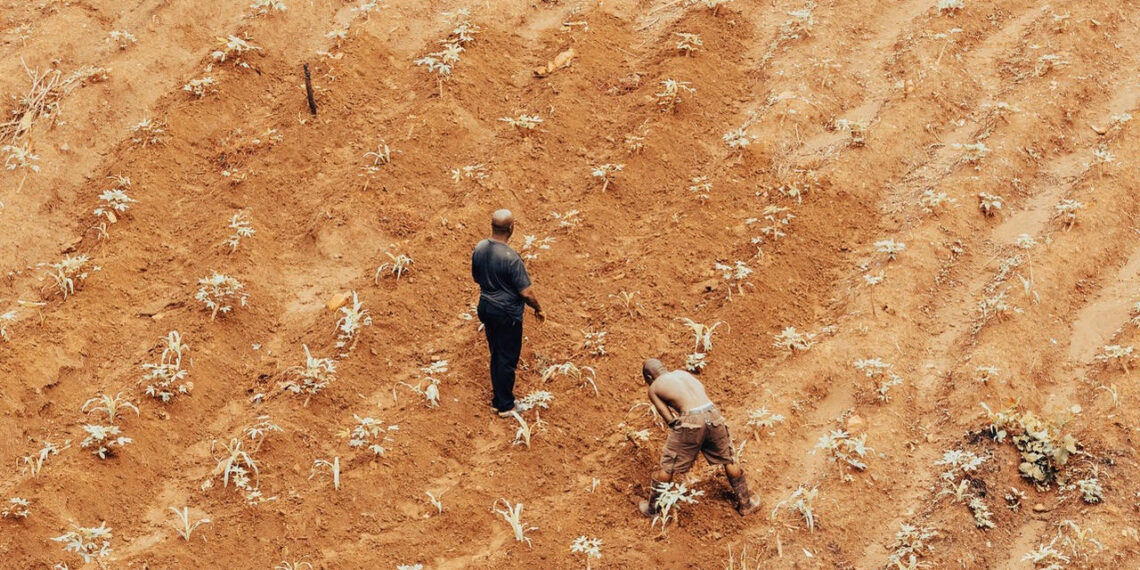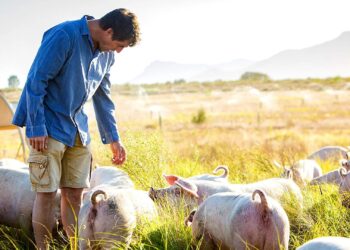Storms, drought, floods and heatwaves are a disaster for small-scale farmers in Africa, who can’t all afford insurance. Yet new, technologically advanced and cheaper types of agricultural insurance exist and could be rolled out across Africa. These include picture-based insurance that relies on smartphone photos to assess crop damage, and insurance coupons that allow farmers to purchase insurance for times when they know the weather might be bad. In a policy note to the Group of 20 most powerful economies (the G20), economists Berber Kramer and Ruth Vargas Hill set out what South Africa’s G20 presidency should do.
How are African farmers at risk from climate change?
Climate change has made farming in Africa riskier than ever. Livelihoods relying on rain-fed agriculture are deeply tied to weather. Droughts, floods, cyclones, pests and diseases have become more frequent, and rising temperatures mean that crops once well-suited to local climates may no longer thrive.
Globally, nearly one in five people are at risk of facing a severe weather event that they will struggle to recover from. But in Africa, two in every five people face that risk.
The damage to farms goes beyond direct losses of crops or livestock. Even the possibility of a bad season discourages farmers, pastoralists and small enterprises from investing. So it limits income and productivity.
What kind of insurance do smallholder African farmers have?
Very few farmers in Africa are insured against weather shocks. For most insurers, the cost of marketing products, signing up clients and verifying losses exceeds the sums that the smallholder farmers are insuring themselves for.
📢 Stand Up, Be Seen, Be Counted
We want to provide you with the most valuable, relevant information possible. Please take a few minutes to complete this short, confidential survey about your farming practices and challenges. Your feedback helps us tailor our coverage to better support the future of agriculture across Mzansi.
Insurance companies also struggle to assess an individual farmer’s risk or farmers’ efforts to prevent damage. This can make insurance companies reluctant to offer coverage to smallholder farmers.
Without insurance, millions of farmers, pastoralists, and small and medium agricultural businesses are exposed to losses that could wipe out their livelihoods.
What insurance could help these farmers survive climate disasters?
Index-based insurance is the main option. This type of insurance does not check conditions on every individual farm, but instead, uses general data to estimate the losses for a region. This general data could be rainfall measured at nearby weather stations, vegetation measured by satellite images, or the average crop yields in an area.
This data is cheaper to collect because it does not depend on a farmer’s individual effort to prevent damage from happening. So insurers can keep costs low and extend coverage to many more clients.
So why don’t smallholder farmers already have index-based insurance?
The main problem with index-based insurance is basis risk. Basis risk means that payouts do not always match the cost of the actual damage. This is because the insurance product uses general data to figure out losses in a region, instead of checking damage on every farm.
For instance, a farmer’s crops may have been destroyed, while according to the insurer’s data, crops in a region were not damaged. Therefore, the farmer will not receive an insurance payout. Or the other way around: the data may suggest there is crop damage, and the farmer does receive compensation, while the farmer’s crops are just fine. This mismatch between compensation and damage will discourage uptake.
Related stories
- How parametric insurance can help farmers fight climate change
- Land Bank champions insurance literacy for rural farmers at Nampo
- Wildfire threat rises: Farmers urged to shield farms with fire insurance
Many farmers do not realise they are insured if coverage is bundled with other products like credit or fertiliser, and they do not know what they are entitled to.
How can new types of insurance solve these problems?
A number of innovative forms of insurance would work well across Africa:
- Guaranteed Asset Protection or gap insurance: This system uses general data to decide payouts, but if farmers think the amount they’re offered is unfair, they can ask for a check-up. In that case, someone from the insurance company visits their area to measure the actual harvest, and that information is then used to decide how much compensation they should get.
- Insurance coupons: These allow farmers to mix and match insurance policies. For example, a farmer could take out insurance in case the rainfall drops below a certain level over a two-week period. The purpose of this would be to insure against weather disasters that could cause crops to fail (drought in a time when crops need rainfall). This way, farmers can tailor their product to very specific risks in a given period for which they know they will need insurance.
- Informal insurance networks: these are groups that already exist, such as funeral groups, where the members already help each other in times of distress. These could be expanded or replicated for farmers to pool money that is used when one farmer’s crops are damaged by weather.
- Picture-based insurance: this uses smartphone photos to assess crop damage remotely and claim insurance. This combines the affordability of index insurance with the accuracy of indemnity insurance, meaning that more farmers are likely to buy this insurance.
- Gender-based insurance: insurance that directly addresses the risks that women farmers face.
- Keeping up to date with artificial intelligence improvements in insurance: using image recognition to verify claims, and large language models to improve communication between farmers and insurance companies, can improve trust and reduce misunderstandings.
In Djibouti, Ethiopia, Kenya and Somalia, this is already happening. Pastoralists there can now access index-based livestock insurance through the DRIVE programme. This is a US$360.5 million project funded by the World Bank and other organisations, which hopes to connect over 1.6 million pastoralists to insurance.
What can the G20 South African presidency do to boost this?
South Africa’s G20 presidency should encourage continent-wide risk pooling (sharing risks across countries or regions to reduce the financial impact of localised shocks).
The G20 presidency should also champion transfer policies for smallholder farmers (shifting risks to financial markets or third parties through mechanisms like insurance and re-insurance).
To promote better product design under its G20 presidency, South Africa can:
- Help establish a body to monitor the quality of insurance products, tracking how well different policies perform.
- Support partnerships that use technology, including AI, to improve insurance design and delivery.
- Encourage collaboration between insurance companies and regulators to share lessons on what works best.
- Champion insurance that is combined with credit, and input to farms such as seeds and irrigation – these combinations make it more likely that smallholder farmers will be interested. For example, in Malawi and Ethiopia, farmers who take out agricultural loans or buy fertiliser from certain companies automatically receive crop insurance.
Public funding can help grow these programmes, but we don’t yet know which subsidies work, who benefits, or if they’re worth the cost. South Africa can improve this by testing what works, sharing ideas on better ways to spend money, and working with insurers to see what programs are effective.
Insurance should support, not replace, practical steps like drought-resistant crops, conservation farming, and better weather information. With climate shocks increasing, Africa needs fair, simple insurance that actually helps farmers.
- This article was first published by The Conversation. Berber Kramer is a senior research fellow in the Markets, Trade, and Institutions Unit, International Food Policy Research Institute (IFPRI), and Ruth Vargas Hill is a senior economist and director of the Markets, Trade, and Institutions Unit in the Food and Nutrition Policy Department, CGIAR.
LISTEN: Podcast: Crop insurance is essential armour against farming risks

















